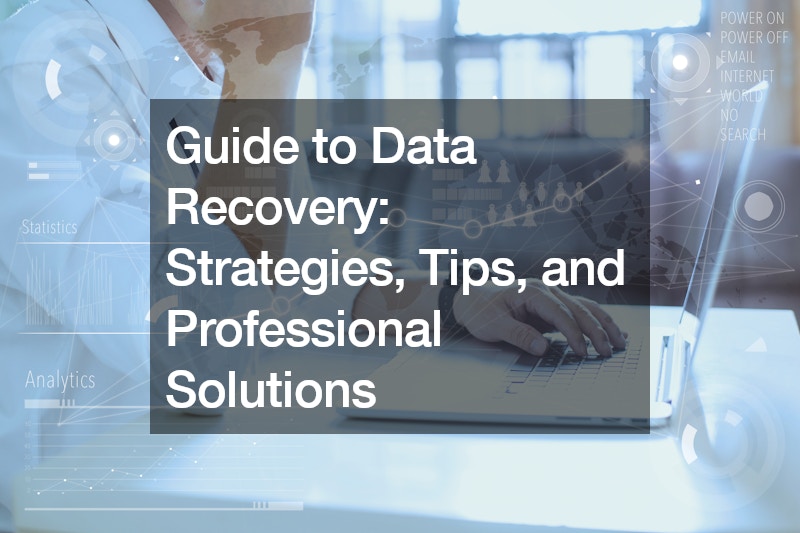
In today’s digital age, data loss can be a nightmare scenario for both individuals and businesses alike. Whether it’s due to hardware failure, accidental deletion, or malicious attacks, losing important files and documents can lead to significant stress and frustration. However, with the right strategies and techniques in place, you can mitigate the risks of data loss and ensure that your valuable information remains safe and accessible. This comprehensive guide will explore various data recovery strategies, offer practical tips, and delve into professional solutions to help you get past the challenges of data loss effectively.
Understanding the Causes of Data Loss
Data loss stems from various factors, spanning from hardware glitches to human oversight. Among these, hardware failure poses a significant threat, often arising from malfunctioning hard drives or sudden power surges.
Accidental deletion and software corruption are equally common, resulting in irreplaceable data loss. Moreover, physical damage, theft, and natural disasters amplify the vulnerability, emphasizing the need for comprehensive data protection strategies.
To mitigate data loss risks effectively, understanding the diverse causes is essential. Hardware failures demand robust maintenance protocols, while human errors necessitate stringent data management practices. Furthermore, proactive measures against physical damage, theft, and natural disasters, such as secure storage and disaster recovery plans, are indispensable.
Backup Strategies
One of the most effective ways to prevent data loss is by implementing a robust backup strategy. Regular backups are essential, ensuring that you always have a recent copy of your data in case of emergencies. Consider making multiple backups and storing them in different locations to mitigate the risk of loss.
While there are various methods available, leveraging cloud storage services such as Box and Dropbox can enhance the effectiveness of your backup plan. Both Box and Dropbox offer cloud storage solutions that allow users to store and access their files securely from anywhere with an internet connection.
However, both cloud-based storage platforms offer limited functionality in terms of safeguarding against data loss, file versioning, or accidental deletion. By using intuitive tools to back up Box & Dropbox, users can augment the built-in features of these platforms and recover data quickly when the need arises. Automatic backups can streamline the process and ensure consistency while testing your backups regularly is crucial to identifying and addressing any issues promptly.
DIY Data Recovery
When faced with data loss, it’s natural to want to attempt recovery on your own. DIY data recovery techniques offer individuals an initial avenue for reclaiming lost data. By leveraging accessible methods like checking the recycle bin or utilizing file recovery software, users can often retrieve inadvertently deleted files or corrupted data. Booting from a recovery disk provides another option for accessing inaccessible files or repairing system errors.
However, it’s crucial to exercise caution and avoid further data damage during DIY recovery attempts, particularly in cases of physical device damage. While these techniques may yield successful outcomes for minor data loss incidents, more complex scenarios may require professional intervention to ensure data integrity and avoid exacerbating the problem.
Professional Data Recovery
In cases where DIY efforts fall short or when data loss is extensive, enlisting the services of professional data recovery providers becomes imperative. These specialized firms boast a wealth of expertise, utilizing cutting-edge tools and methodologies to tackle data recovery challenges effectively. Whether the issue lies with a malfunctioning hard drive, corrupted solid-state drive, or damaged memory card, professional technicians are adept at diagnosing the root cause and implementing tailored solutions to recover lost data.
Preventing Data Loss
Preventing data loss should be prioritized alongside data recovery efforts. Implementing a proactive approach involves regular software updates to patch vulnerabilities and enhance system stability. Adequate antivirus protection is essential in safeguarding against malware threats, while organizing files optimizes data accessibility and reduces the likelihood of accidental deletion.
Additionally, proper hardware maintenance practices, such as controlling temperature levels and minimizing dust accumulation, are vital for prolonging device lifespan and mitigating the risk of hardware failures. By integrating these preventive measures into everyday operations, individuals and organizations can establish a resilient data protection framework, ensuring data integrity and continuity in the face of potential threats.
In Summary
Data loss is a pervasive and potentially devastating issue in today’s digital landscape. However, by understanding the common causes of data loss, implementing effective backup strategies, and leveraging both DIY and professional data recovery solutions, you can safeguard your valuable information and minimize the impact of data loss incidents. Remember to prioritize prevention through proactive measures such as regular backups, software updates, and employee education. With a comprehensive approach to data recovery and prevention, you can ensure that your critical data remains secure and accessible at all times.
.

